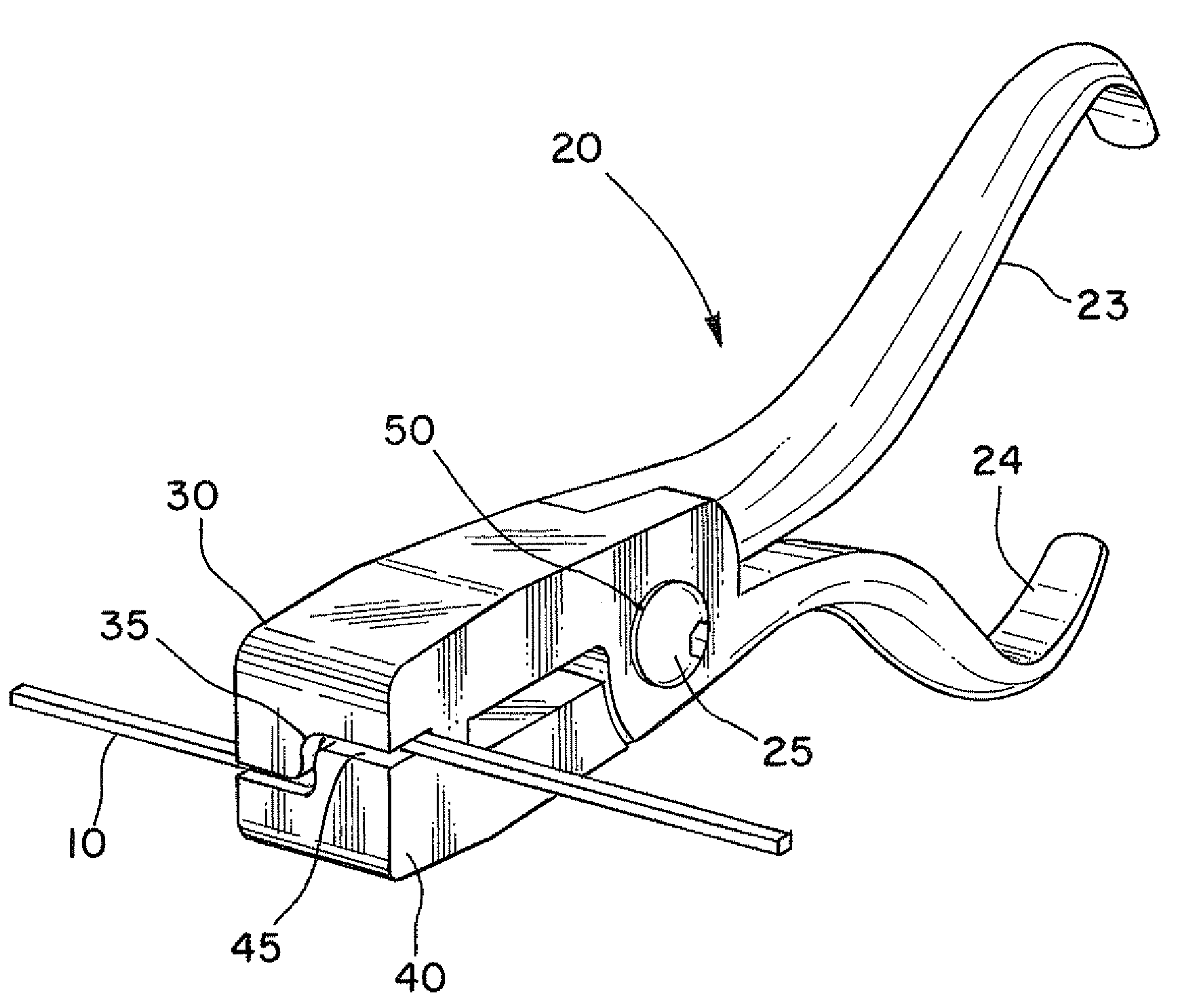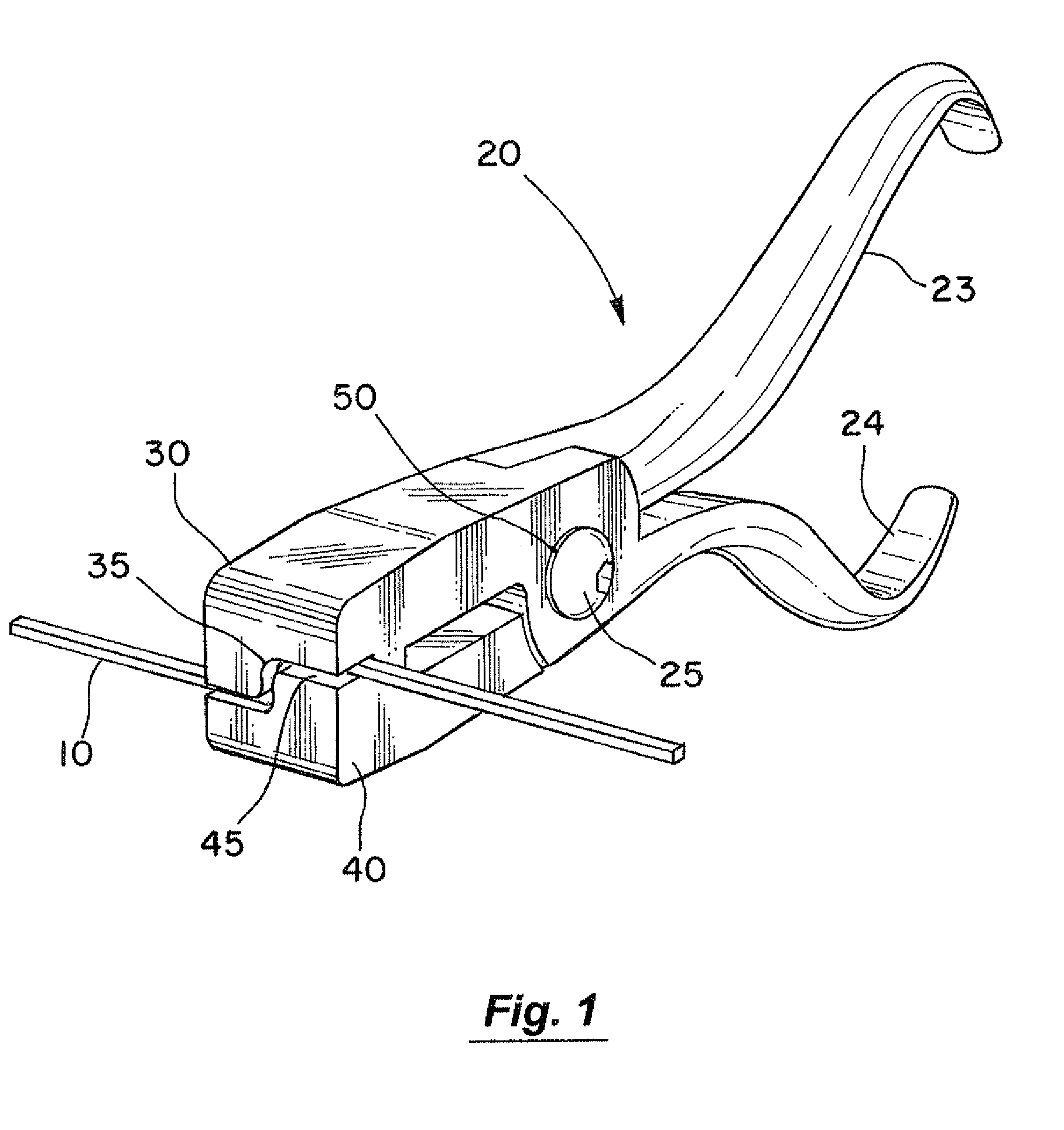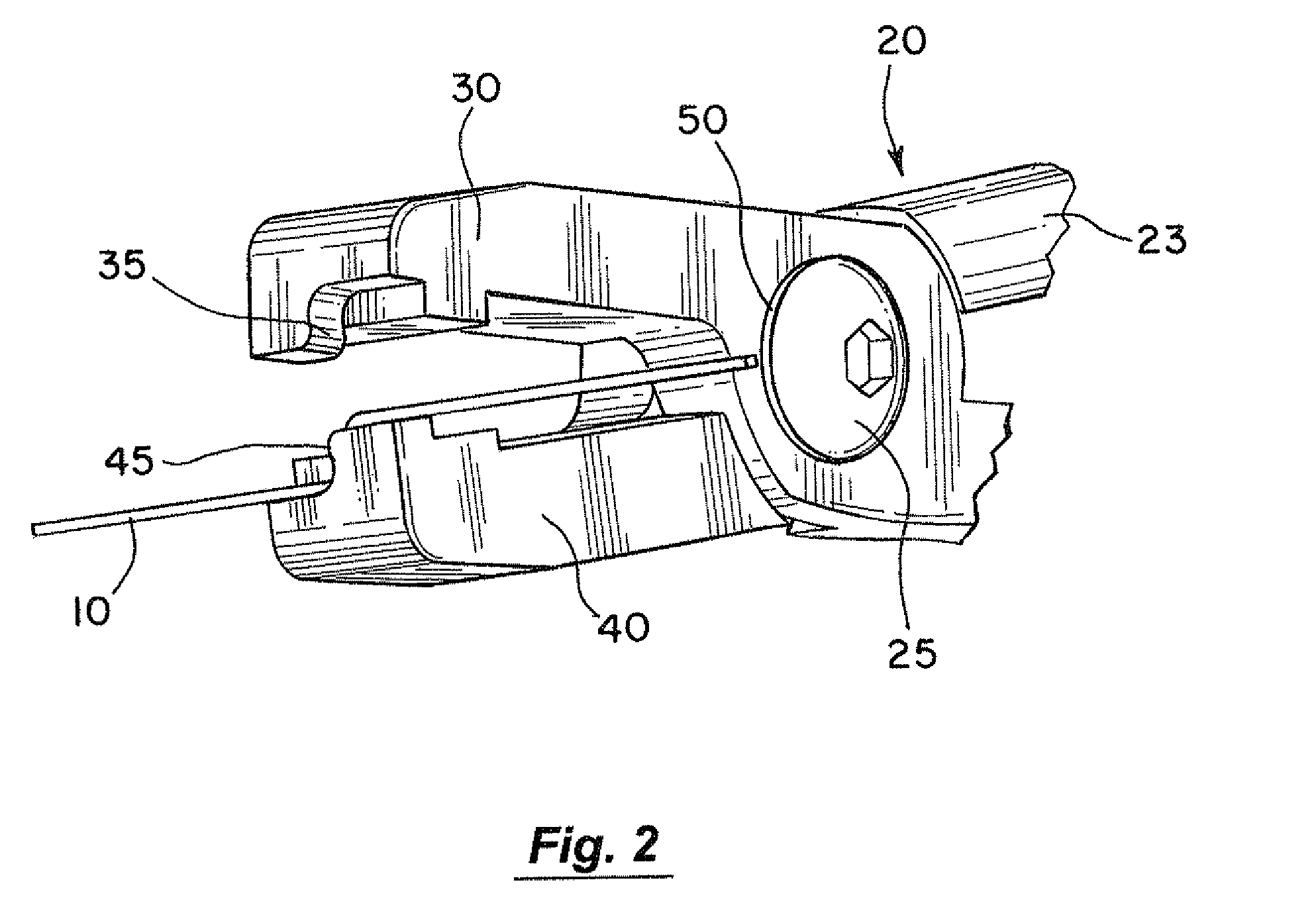Pliers for forming orthodontic wires
a technology of orthodontic wires and pliers, which is applied in the field of pliers for forming orthodontic wires, can solve the problems of inability to form sharp bends in fully elastic ni—ti wires, interference between the beaks of pliers, and the degree of scuffing of wires
- Summary
- Abstract
- Description
- Claims
- Application Information
AI Technical Summary
Benefits of technology
Problems solved by technology
Method used
Image
Examples
Embodiment Construction
[0051]One embodiment of the present invention is shown in FIGS. 1-4. FIG. 1 is a front perspective view of the pliers 20. FIG. 2 is a detail perspective view with the beaks of the pliers 20 in an open position. FIG. 3 is a detail perspective view of lower beak 40 of the pliers and the formed wire 10. FIG. 4 is a detail perspective view of the pliers 20 with the beaks 30, 40 partially closed. The major components of the pliers 20 are two handles 23, 24 and beaks 30, 40 rotatably connected by a hinge mechanism 25. Each beak 30, 40 can be formed as a single piece with one of the handles 23, 24, as is the case with many conventional pliers.
[0052]The beaks 30, 40 include complementary wire-forming surfaces 35, 45 for forming an orthodontic wire into a predetermined shape. As the pliers 20 are closed, the wire-forming surfaces 35, 45 are brought together to form a channel having the desired shape and dimensions to form a wire. The spacing between the wire-forming surfaces 35, 45 should al...
PUM
| Property | Measurement | Unit |
|---|---|---|
| width | aaaaa | aaaaa |
| width | aaaaa | aaaaa |
| biasing force | aaaaa | aaaaa |
Abstract
Description
Claims
Application Information
 Login to View More
Login to View More - R&D
- Intellectual Property
- Life Sciences
- Materials
- Tech Scout
- Unparalleled Data Quality
- Higher Quality Content
- 60% Fewer Hallucinations
Browse by: Latest US Patents, China's latest patents, Technical Efficacy Thesaurus, Application Domain, Technology Topic, Popular Technical Reports.
© 2025 PatSnap. All rights reserved.Legal|Privacy policy|Modern Slavery Act Transparency Statement|Sitemap|About US| Contact US: help@patsnap.com



